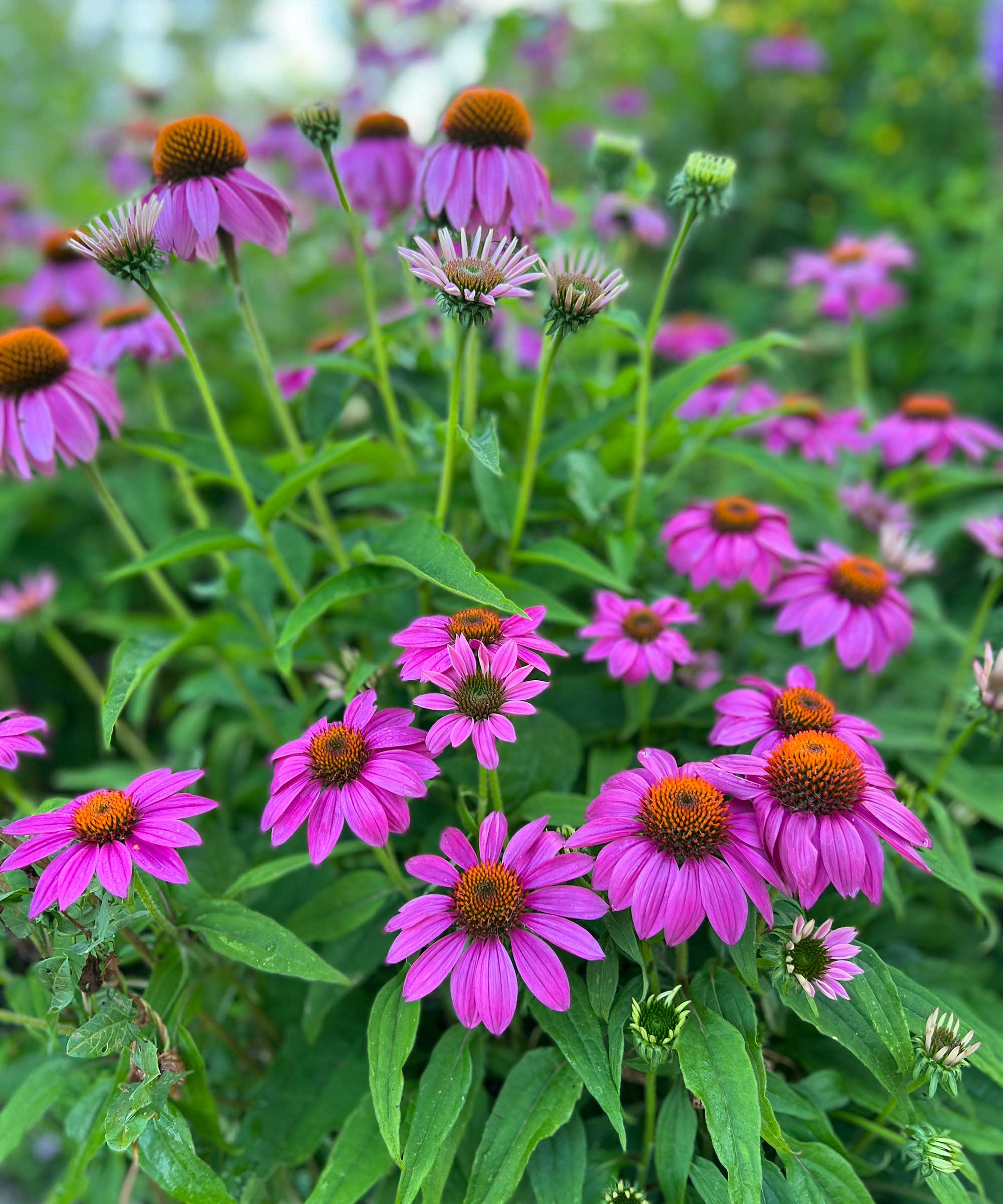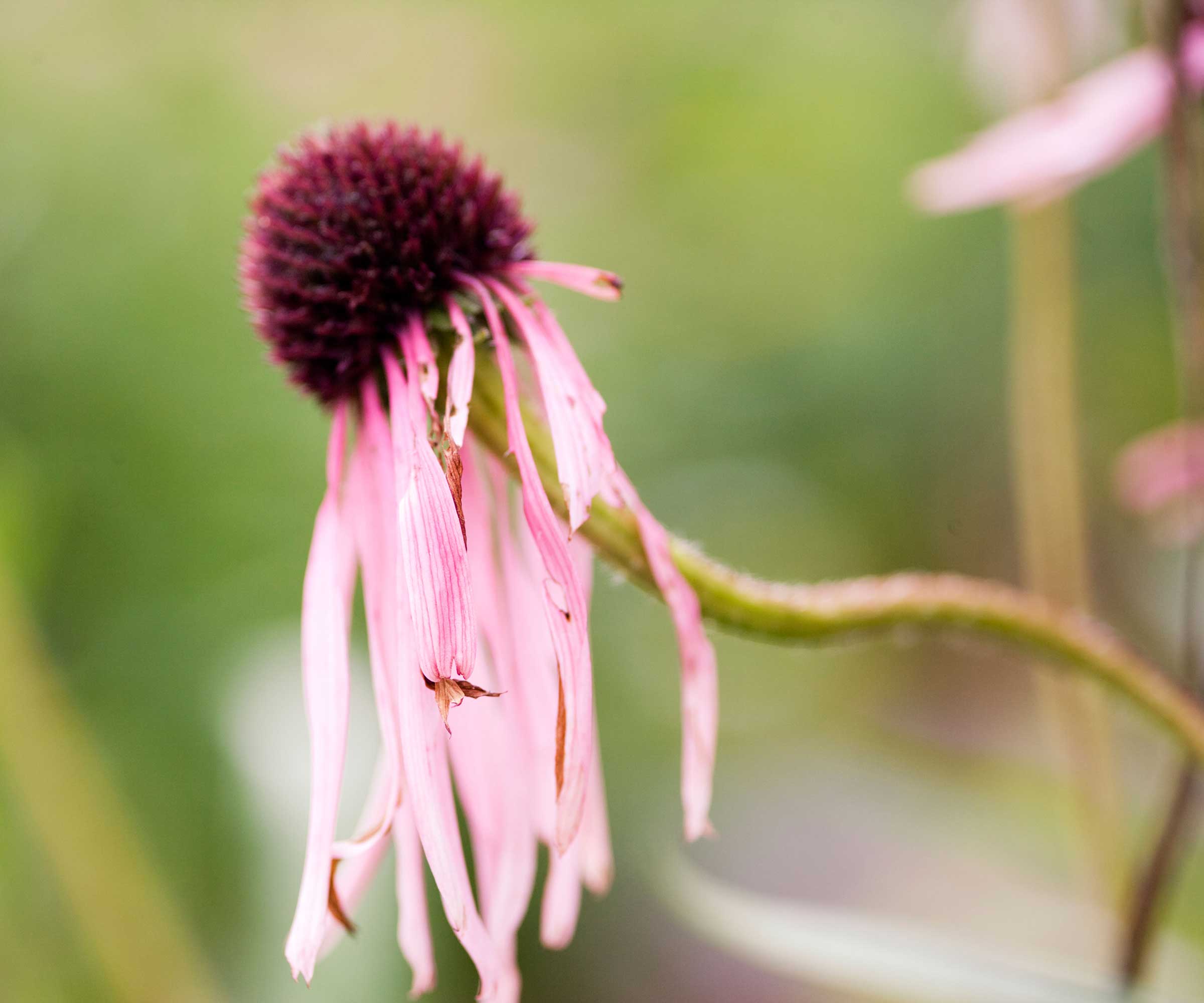
Q: I have planted lots of new coneflowers (echinacea) in my yard this year as part of a drought-tolerant, prairie-garden scheme. They have started to flower and they look beautiful, but I'm wondering what to do when the blooms fade. Should I deadhead them, and if so, what's the best approach?
A: Deadheading plants is beneficial in more ways than one – and echinaceas are no exception. Removing the faded flowers will encourage the plants to make more blooms, rather than channel their energy into producing seeds. This means you can continue to enjoy their colorful display for longer – and so can visiting bees and butterflies.
Regular deadheading also creates a neater appearance overall for your flower beds and containers, and, according to gardening expert Tony O'Neill, 'can prevent diseases and pest infestations, keeping your plants healthy.'

How to deadhead coneflowers
The process of deadheading echinaceas is very simple, as landscaping expert Bryan Clayton explains:
- 'Identify the spent flowers. These are the ones that look faded, wilted, or dried out.'
- 'Cut the stem of the faded flower back to the nearest set of leaves,' Bryan continues. 'If you want to encourage bushier growth, you can cut back to a leaf node further down the stem.' Use a sharp and clean pair of garden pruners for the job. 'Ensure you don't cut into the main stem or the rosette of leaves at the base,' adds Tony.
- 'Dispose of the removed flower heads in your compost bin or green waste,' Bryan says.
'After deadheading, give your echinacea plant a good watering to help it recover from the stress of the process,' recommends Becky Decker of Gardeninghood.com. 'Consider applying a balanced fertilizer to provide the necessary nutrients for healthy growth and blooming.'

When to deadhead coneflowers
You can continue to deadhead your coneflowers throughout summer, as and when needed. However, chopping off the last of the blooms at the end of the season means that you'll miss out on the opportunity for free plants next year.
Leaving some of the spent flower heads intact in late summer and fall will enable your echinaceas to self-seed and naturally proliferate in your yard, Bryan says. Allowing a few faded flowers to develop into seedheads will also help to make your yard more wildlife-friendly. They will provide a valuable food source for birds during the winter, Bryan says. Plus, they can offer beneficial insects a safe place to shelter throughout the colder months.
Alternatively, you can collect the seeds once the seedheads have dried, and store them for sowing wherever you like in your garden.
At the end of winter, as the plants start into new growth, you can cut dead coneflower stems back at the base.

Coneflowers are a beautiful and low-maintenance addition to any yard, and deadheading them correctly is an easy way to enjoy a prettier display for longer. Just remember to stay clear of the common deadheading mistakes for the best results.







